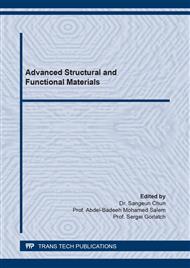[1]
M. Kaczmarek, E. Stano, Nonlinearity of Magnetic Core in Evaluation of Current and Phase Errors of Transformation of Higher Harmonics of Distorted Current by Inductive Current Transformers, IEEE Access. 8 (2020) 118885–118898.
DOI: 10.1109/access.2020.3005331
Google Scholar
[2]
M. Kaczmarek, Inductive current transformer accuracy of transformation for the PQ measurements, Electr. Power Syst. Res., 150 (2017), 169–176.
DOI: 10.1016/j.epsr.2017.05.006
Google Scholar
[3]
B. Gustavsen, Wideband transformer modeling including core nonlinear effects, IEEE Trans. Power Del., 31 (2016), 219 – 227.
DOI: 10.1109/tpwrd.2015.2440446
Google Scholar
[4]
M. Kaczmarek and E. Stano, Proposal for extension of routine tests of the inductive current transformers to evaluation of transformation accuracy of higher harmonics, IINT J ELEC POWER, 113 (2019) 842-849.
DOI: 10.1016/j.ijepes.2019.06.034
Google Scholar
[5]
M. Kaczmarek, Measurements of current error and phase displacement of the CT in condition of distorted currents transformation, Przeglad Elektrotechniczny, 88 (2012) 317-318.
Google Scholar
[6]
M. Kaczmarek, Measurement error of non-sinusoidal electrical power and energy caused by instrument transformers, IET Gener. Transm. Distrib., 10 (2016) 3492-3498.
DOI: 10.1049/iet-gtd.2016.0131
Google Scholar
[7]
L. Cristaldi, M. Faifer, C. Laurano, R. Ottoboni, S. Toscani and M. Zanoni, A Low-Cost Generator for Testing and Calibrating Current Transformers, IEEE Trans. Instrum. Meas., 68 (2019) 2792 – 2799.
DOI: 10.1109/tim.2018.2870264
Google Scholar
[8]
E. Stano and M. Kaczmarek, Wideband Self-Calibration Method of Inductive CTs and Verification of Determined Values of Current and Phase Errors at Harmonics for Transformation of Distorted Current, Sensors, 20 (2020), 2167.
DOI: 10.3390/s20082167
Google Scholar
[9]
M. Kaczmarek, Wide frequency operation of the inductive current transformer with Ni80Fe20 toroidal core, Electr. Pow. Compon. Syst. 10 (2014) 1087–1094.
DOI: 10.1080/15325008.2014.913744
Google Scholar
[10]
W. Chen, J. Ma, X. Huang, Y. Fang, Predicting Iron Losses in Laminated Steel with Given Non-Sinusoidal Waveforms of Flux Density, Energies 8 (2015) 13726–13740.
DOI: 10.3390/en81212384
Google Scholar
[11]
X. Yu, Y. Li, Q. Yang, S. Yue, C. Zhang, Loss Characteristics and Model Verification of Soft Magnetic Composites Under Non-Sinusoidal Excitation, IEEE Trans. on mag. 55 (2019) 6100204.
DOI: 10.1109/tmag.2018.2869379
Google Scholar
[12]
H. Hamzehbahmani, Inter-laminar fault analysis of magnetic cores with grain-oriented electrical steels under harmonic distortion magnetisations, IET Sci. Meas. Technol. 14 (2020) 26 - 31.
DOI: 10.1049/iet-smt.2019.0191
Google Scholar
[13]
U. Aydina, P. Rasiloab, F. Martina, A. Belahcena, L. Danielc, A. Haavistoa, A. Arkkioa, Effect of multi-axial stress on iron losses of electrical steel sheets, J. Magn. Magn. Mater. 469 (2019) 19-17.
Google Scholar
[14]
A. Krings, J. Soulard, O.Wallmark, PWM Influence on the Iron Losses and Characteristics of a Slot-less Permanent Magnet Motor with SiFe and NiFe Stator Cores, IEEE Trans. Ind. Appl. 51 (2014) 1475 - 1484.
DOI: 10.1109/tia.2014.2354735
Google Scholar
[15]
M. Kaczmarek and P. Kaczmarek, Comparison of the wideband power sources used to supply step-up current transformers for generation of distorted currents, Energies, 13 (2020), 1849.
DOI: 10.3390/en13071849
Google Scholar
[16]
M. Kaczmarek and E. Stano, Application of the inductive high current testing transformer for supplying of the measuring circuit with distorted current, IET Electric Power Application, 13 (2019) 1310 – 1317.
DOI: 10.1049/iet-epa.2018.5803
Google Scholar


